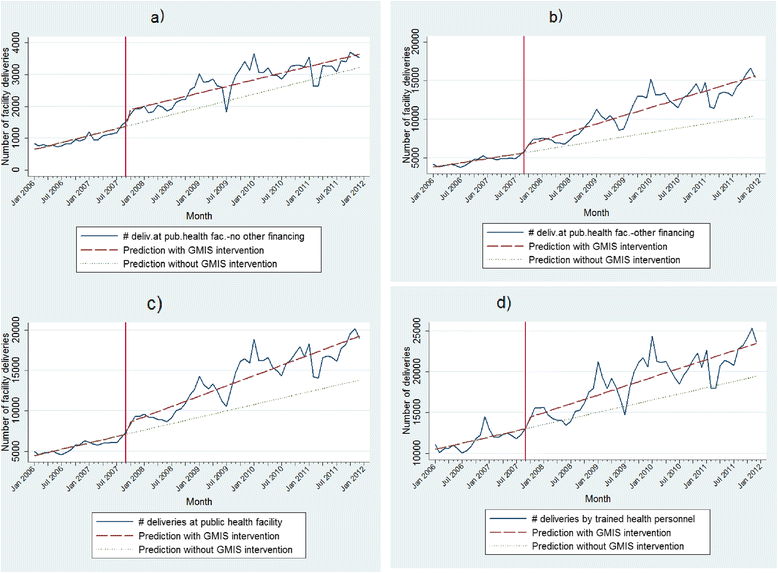Boosting facility deliveries with results-based financing: a mixed-methods evaluation of the government midwifery incentive scheme in Cambodia
- PMID: 26276138
- PMCID: PMC4537578
- DOI: 10.1186/s12884-015-0589-x
Boosting facility deliveries with results-based financing: a mixed-methods evaluation of the government midwifery incentive scheme in Cambodia
Abstract
Background: Increasing the coverage of skilled attendance at births in a health facility (facility delivery) is crucial for saving the lives of mothers and achieving Millennium Development Goal five. Cambodia has significantly increased the coverage of facility deliveries and reduced the maternal mortality ratio in the last decade. The introduction of a nationwide government implemented and funded results-based financing initiative, known as the Government Midwifery Incentive Scheme (GMIS), is considered one of the most important contributors to this. We evaluated GMIS to explore its effects on facility deliveries and the health system.
Methods: We used a mixed-methods design. An interrupted time series model was applied, using routine longitudinal data on reported deliveries between 2006 and 2011 that were extracted from the health information system. In addition, we interviewed 56 key informants and performed 12 focus group discussions with 124 women who had given birth (once or more) since 2006. Findings from the quantitative data were carefully interpreted and triangulated with those from qualitative data.
Results: We found that facility deliveries have tripled from 19% of the estimated number of births in 2006 to 57% in 2011 and this increase was more substantial at health centres as compared to hospitals. Segmented linear regressions showed that the introduction of GMIS in October 2007 made the increase in facility deliveries and deliveries with skilled attendants significantly jump by 18 and 10% respectively. Results from qualitative data also suggest that the introduction of GMIS together with other interventions that aimed to improve access to essential maternal health services led to considerable improvements in public health facilities and a steep increase in facility deliveries. Home deliveries attended by traditional birth attendants decreased concomitantly. We also outline several operational issues and limitations of GMIS.
Conclusions: The available evidence strongly suggests that GMIS is an effective mechanism to complement other interventions to improve health system performance and boost facility deliveries as well as skilled birth attendance; thereby contributing to the reduction of maternal mortality. Our findings provide useful lessons for Cambodia to further improve GMIS and for other low-income countries to implement similar results-based financing mechanisms.
Figures

References
-
- Trends in Maternal Mortality: 1990 to 2010. WHO, UNICEF, UNFPA and the World Bank estimates. Geneva: World Health Organization; 2012.
-
- Cambodia Demographic and Health Survey 2005. Phnom Penh, Cambodia: National Institute of Statistics, Ministry of Planning; Directorate General for Health, Ministry of Health; and ICF Macro; 2006.
Publication types
MeSH terms
LinkOut - more resources
Full Text Sources
Other Literature Sources
Medical

